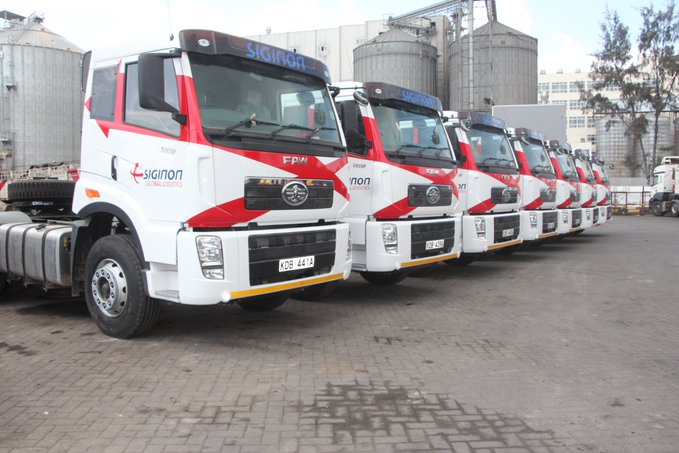- May 29, 2024
- Posted by: AlcoblowPro®
- Categories: Alcoblow, Government, Occupational Health

Workplace safety is a paramount concern for employers worldwide, and in Africa, this is no different. As companies strive to create safer work environments, one innovative solution gaining traction is the use of workplace breathalyzers. This article delves into the benefits of breathalyzers for workplace safety, explores other cutting-edge technologies relevant to this cause, and highlights their impact on companies in Kenya, East Africa, and Africa as a whole.
Introduction
Workplace safety encompasses a wide range of practices aimed at preventing accidents and ensuring the well-being of employees. One significant aspect of this is mitigating the risks associated with alcohol consumption. Breathalyzers, devices that measure blood alcohol concentration (BAC) from a breath sample, have become a valuable tool in maintaining workplace safety. This article examines the role of breathalyzers in enhancing safety, their benefits, and their integration with other advanced technologies in the African workplace.
The Role of Breathalyzers in Workplace Safety
Reducing Alcohol-Related Incidents
Alcohol consumption can impair judgment, coordination, and reaction times, leading to accidents and injuries. In industries such as construction, transportation, and manufacturing, where precision and alertness are crucial, alcohol impairment can have disastrous consequences. By implementing breathalyzers, companies can:
- Prevent Alcohol-Related Accidents: Regular testing can deter employees from consuming alcohol before or during work hours.
- Enhance Productivity: Ensuring employees are sober can improve focus, efficiency, and overall productivity.
- Reduce Absenteeism: Addressing alcohol-related issues can lead to fewer absences due to hangovers or alcohol-related health problems.
Promoting a Culture of Safety
The presence of breathalyzers can foster a culture of safety and responsibility within the workplace. Employees are more likely to adhere to safety protocols when they know their sobriety is being monitored. This can lead to:
- Increased Accountability: Employees are held accountable for their actions, reducing the likelihood of unsafe behavior.
- Enhanced Morale: A safer work environment boosts employee morale and job satisfaction.
- Reputation Management: Companies that prioritize safety are viewed more favorably by clients, partners, and the public.
Implementation of Workplace Breathalyzers
Types of Breathalyzers
There are various types of breathalyzers available, each suited to different workplace needs:
- Portable Breathalyzers: Ideal for on-the-spot testing during random checks or after incidents.
- Stationary Breathalyzers: Fixed devices at workplace entrances to test employees as they arrive.
- Connected Breathalyzers: Integrated with digital systems for real-time data tracking and analysis.
Best Practices for Implementation
For effective use of breathalyzers, companies should:
- Develop Clear Policies: Establish guidelines on testing frequency, consequences of failed tests, and privacy concerns.
- Ensure Training: Provide training for staff on how to use the devices and interpret results.
- Maintain Equipment: Regularly calibrate and service breathalyzers to ensure accuracy.
Other Cutting-Edge Technologies for Workplace Safety
Wearable Technology
Wearable devices, such as smart helmets, vests, and wristbands, are revolutionizing workplace safety. These devices can monitor vital signs, detect fatigue, and alert workers to hazardous conditions. Benefits include:
- Real-Time Monitoring: Immediate feedback on physical and environmental conditions.
- Data Collection: Aggregated data for analysis and improving safety protocols.
- Enhanced Communication: Instant alerts and communication capabilities in emergencies.
Artificial Intelligence (AI) and Machine Learning
AI and machine learning are transforming workplace safety by predicting and preventing accidents. Applications include:
- Predictive Maintenance: Identifying machinery at risk of failure before it happens.
- Safety Analytics: Analyzing patterns in accident data to identify risk factors.
- Automation: Reducing human error by automating hazardous tasks.
Drones and Robotics
Drones and robots are increasingly used in industries such as construction, mining, and logistics for tasks that are dangerous for humans. Their use can:
- Minimize Risk: Perform inspections and maintenance in hazardous areas.
- Improve Efficiency: Speed up processes like surveying and inventory management.
- Enhance Data Accuracy: Provide precise data collection in challenging environments.
Impact on Companies in Kenya, East Africa, and Africa
Case Studies and Success Stories
Several companies in Kenya and across Africa have successfully implemented breathalyzers and other safety technologies:
- Kenyan Construction Firm: Reduced workplace accidents by 40% within a year of introducing breathalyzers and wearable tech.
- East African Logistics Company: Improved delivery times and reduced accidents by integrating AI and drones into their operations.
- South African Mining Company: Enhanced worker safety and operational efficiency through the use of robotics and predictive analytics.
Challenges and Opportunities
While the adoption of these technologies presents numerous benefits, challenges remain:
- Cost: High initial investment and maintenance costs.
- Training: Need for skilled personnel to manage and operate new technologies.
- Infrastructure: Limited technological infrastructure in some regions.
Despite these challenges, the opportunities for improving workplace safety in Africa are immense. Governments and private sector stakeholders are increasingly recognizing the value of investing in safety technologies, leading to a safer and more productive workforce.
Conclusion
The integration of workplace breathalyzers and other cutting-edge technologies represents a significant advancement in ensuring safety across various industries. In Kenya, East Africa, and the broader African continent, these innovations are not only reducing accidents and enhancing productivity but also fostering a culture of safety and responsibility. As technology continues to evolve, the commitment to workplace safety must remain a priority, paving the way for a safer, healthier, and more prosperous future for all.
By embracing these advancements, African companies can lead the way in workplace safety, setting a standard for others to follow and contributing to the overall development and growth of the region.
